social discount rate
description: rate used for discounting future benefits or costs to society
9 results

Markets, State, and People: Economics for Public Policy
by
Diane Coyle
Published 14 Jan 2020
.* It argued for a social discount rate of 1.4% (δ = 0.1%, g = 1.3%, and η = 1). A lower figure for the social discount rate makes the future net cost of environmental damage far greater, and likewise the net benefit of acting to avert it now. Other economists disputed these low numbers; William Nordhaus suggested δ = 1.5% and η = 2, more than doubling the Stern figure at the same forecast for growth. Partha Dasgupta suggested η should be up to 4, reflecting a greater concern for income inequality (including over time), even with a low δ that gives a much higher social discount rate than Stern suggested.
…
We might also want to incorporate views about whether we care less about people in the future than we do about ourselves. Sometimes the interest rate on long-term risk-free assets, such as government bonds, is used in CBAs. Generally, though, the ideal rate to be selected for government CBAs—especially for questions involving long horizons, such as environmental policies—is based on a 1928 formula for the social discount rate set out by Frank Ramsey and known as the Ramsey rule. It is rt = Δ + η * gt where δ is the pure social time preference rate (this is lower the more patient the society to get a return on money invested now) η is the elasticity of marginal utility of consumption (measuring how quickly utility falls as consumption increases over time, or in different places, or different states of the world, which is lower the more slowly this marginal utility declines) gt is the growth rate of consumption per capita at time t (measuring how much additional consumption there will be in future time periods) The need for a social discount rate that differs from any private interest rates is due to several factors: observed market interest rates will not take an inter-generational perspective; future generations have no voice in current policy decisions; and long time horizons involve greater uncertainty.
…
It is rt = Δ + η * gt where δ is the pure social time preference rate (this is lower the more patient the society to get a return on money invested now) η is the elasticity of marginal utility of consumption (measuring how quickly utility falls as consumption increases over time, or in different places, or different states of the world, which is lower the more slowly this marginal utility declines) gt is the growth rate of consumption per capita at time t (measuring how much additional consumption there will be in future time periods) The need for a social discount rate that differs from any private interest rates is due to several factors: observed market interest rates will not take an inter-generational perspective; future generations have no voice in current policy decisions; and long time horizons involve greater uncertainty. The formula, derived from Ramsey’s work on optimal long-run economic growth, intuitively states that the optimal interest rate society will pay to deliver the amount of savings and investment that maximizes social output over time depends on the growth of consumption, how much extra utility the additional consumption brings, and how much people now care about the well-being of people in the future.

Tyler Cowen - Stubborn Attachments A Vision for a Society of Free, Prosperous, and Responsible Individuals
by
Meg Patrick
To the extent there is uncertainty about the correct approach to discounting, that uncertainty itself pushes us toward favoring much lower discount rates. Economist Martin Weitzman (2001, p.260) put this point clearly: “even if every individual believes in a constant discount rate, the wide spread of opinion on what it should be makes the effective social discount rate decline significantly over time.” The results from gamma discounting often show up in our intuitions. Many individuals will argue that the present is more important than thirty years from now, but that after some point 63 See Weitzman (1998, 2012) and also Farmer and Geanakoplos (2009) and Arrow, et.al. (2014).. 107 further differences in time should cease to matter.
…
Journal of Personality and Social Psychology 35(5): 351-363. Burch-Brown, Joanna M. “Clues for Consequentialists,” Utilitas, 2013. Caplan, Bryan. "The Austrian Search for Realistic Foundations." April 1999. Southern Economic Journal 65(4), pp.823-838. Caplin, Andrew, and John Leahy. 2000. “The Social Discount Rate.” NBER Working Paper 7983. Castillo, Marco, Paul J. Ferraro, Jeffrey L. Jordan, and Petrie Ragan. 2011. “The Today and Tomorrow of Kids: Time Preferences and Educational Outcomes of Children.” Journal of Public Economics 95(11-12): 1377-1385. Chang, Ruth, editor. Incommensurability, Incomparability, and Practical Reason.
…
“Resolving the Repugnant Conclusion,” in The Repugnant Conclusion: Essays on Population Ethics, edited by J. Ryberg and T. Tannsjo. Dordrecht: Kluwer Academic Publishers, 2005, 81-98. Cowen, Tyler. “Caring About the Distant Future: Why it Matters and What It Means,” The University of Chicago Law Review, Winter 2007, pp.5-40. 116 Cowen, Tyler and Parfit, Derek. “Against the Social Discount Rate.” In Peter Laslett and James Fishkin, editors, Philosophy, Politics, and Society, sixth series. New Haven: Yale University Press, 1992, 144-161. Cowley, Robert, Ambrose, Stephen E. and McCullough, David. What If?” The World’s Foremost Military Historians Imagine What Might Have Been. Berkeley Publishing Group, 2000.
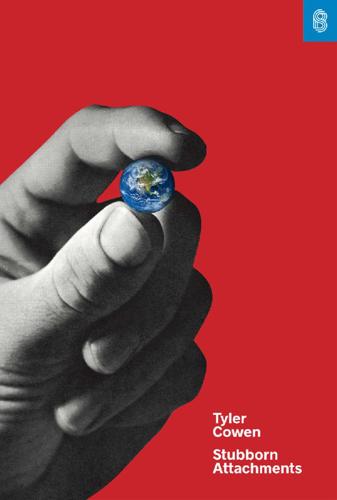
Stubborn Attachments: A Vision for a Society of Free, Prosperous, and Responsible Individuals
by
Tyler Cowen
Published 15 Oct 2018
Journal of Personality and Social Psychology 35, no. 5: 351–363. Burch-Brown, Joanna M. 2014. “Clues for Consequentialists.” Utilitas 26, no. 1 (March): 105–119. Caplan, Bryan. 1999. “The Austrian Search for Realistic Foundations.” Southern Economic Journal 65, no. 4 (April): 823–838. Caplin, Andrew, and John Leahy. 2000. “The Social Discount Rate.” NBER Working Paper No. 7983. Castillo, Marco, Paul J. Ferraro, Jeffrey L. Jordan, and Petrie Ragan. 2011. “The Today and Tomorrow of Kids: Time Preferences and Educational Outcomes of Children.” Journal of Public Economics 95, no. 11–12: 1377–1385. Chang, Ruth, ed. 1997. Incommensurability, Incomparability, and Practical Reason.
…
“Caring About the Distant Future: Why It Matters and What It Means.” The University of Chicago Law Review (Winter): 5–40. Cowen, Tyler. 2011. “Rule Consequentialism Makes Sense After All.” Social Philosophy and Policy 28, no. 2 (July): 212–231. Cowen, Tyler, and Derek Parfit. 1992. “Against the Social Discount Rate.” In Philosophy, Politics, and Society: Volume 6, edited by Peter Laslett and James Fishkin, 144–161. New Haven: Yale University Press. Cowley, Robert, Stephen E. Ambrose, and David McCullough. 2000. “What If?” The World’s Foremost Military Historians Imagine What Might Have Been. Berkley Publishing Group.

The Precipice: Existential Risk and the Future of Humanity
by
Toby Ord
Published 24 Mar 2020
Put another way, the ηg term is applicable only when discounting monetary benefits, but here we are considering discounting wellbeing (or utility) itself. So the ηg term should be treated as zero, leaving us with a social discount rate equal to δ. I introduced δ by saying that it accounts for the catastrophe rate, but it is sometimes thought to include another component too: pure time preference. This is a preference for one benefit over another simply because it comes earlier, and it is a third reason for discounting future benefits. But unlike the earlier reasons, there is substantial controversy over whether pure time preference should be included in the social discount rate. Philosophers are nearly unanimous in rejecting it.6 Their primary reason is that it is almost completely unmotivated.
…
This is clearly the case for extinction and seems likely in other cases too. 5 This point has been made well by Ng (2016) and (2005). 6 Indeed, while many great philosophers have argued against pure time preference—see Sidgwick (1907), Parfit (1984) and Broome (2005)—I know of no philosophers who support its inclusion in the social discount rate, so it may be completely unanimous. For those who know philosophy, this is truly remarkable since philosophers disagree about almost every topic, including whether they are the only person in the world and whether there are any true moral claims (Bourget & Chalmers, 2014). Note that there is a certain amount of talking past each other in the debate between philosophers and economists over discounting.
…
Philosophers often say they are in favor of a zero discount rate, when that isn’t the right term for what they mean (i.e., they have no quarrel with monetary benefits to people mattering less if those people are richer in the future). The philosophers are usually talking about a zero rate of pure time preference, or that the ηg term is inapplicable for the topic they are considering (such as for health benefits). 7 A recent survey of 180 economists who publish on the social discount rate found that their most common estimate for the pure rate of time preference was 0%, with a median of 0.5% (Drupp et al., 2018, p. 120). 8 Ramsey (1928), p. 543; Harrod (1948), p. 40. Arthur Pigou (1920, p. 25) suggested that non-zero pure time preference “implies… our telescopic faculty is defective.” 9 I doubt that this is the job of the economist either.
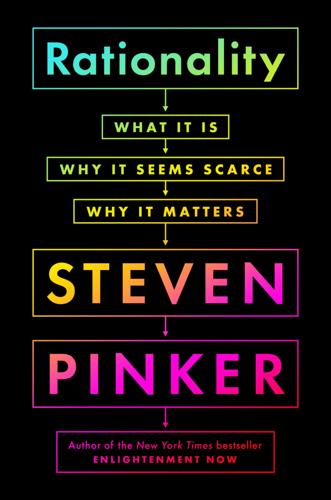
Rationality: What It Is, Why It Seems Scarce, Why It Matters
by
Steven Pinker
Published 14 Oct 2021
At the same time we can curse some of their shortsighted choices whose consequences we are living with, like despoiled environments, extinct species, and car-centered urban planning. The public choices we face today, like how high a tax we should pay on carbon to mitigate climate change, depend on the rate at which we discount the future, sometimes called the social discounting rate.19 A rate of 0.1 percent, which reflects only the chance we’ll go extinct, means that we value future generations almost as much as ourselves and calls for investing the lion’s share of our current income to boost the well-being of our descendants. A rate of 3 percent, which assumes growing knowledge and prosperity, calls for deferring most of the sacrifice to generations that can better afford it.
…
There is no “correct” rate, since it also depends on the moral choice of how we weight the welfare of living people against unborn ones.20 But our awareness that politicians respond to election cycles rather than the long term, and our sad experience of finding ourselves unprepared for foreseeable disasters like hurricanes and pandemics, suggest that our social discounting rate is irrationally high.21 We leave problems to future Homer, and don’t envy that guy. There’s a second way in which we irrationally cheat our future selves, called myopic discounting.22 Often we’re perfectly capable of delaying gratification from a future self to an even more future self.
…
See deep learning; family resemblance categories Galileo, 144 Galton, Francis, 252, 253 gambler’s fallacy, 20–21, 131, 132 gambling, 6, 20–21, 115, 231 choice of games, 179–80 as entertainment, 183 lucky streaks, 148 rational choice theory and, 176–80, 182–83, 188, 188–92, 321, 350n23 games, as family resemblance category, 98–99 game theory Chicken game, 59–62 common knowledge and, 234 communal outrage and, 123–25 coordination games, 233–35 definition, 228 empathy and, 230 Escalation games, 59–61, 235–38, 344n29 focal points, 124, 234–35 and homicides, reactions to, 123 myside bias and, 297–98 Nash equilibrium, 230, 232, 236, 240 outguessing standoffs, 230–32, 234 Prisoner’s Dilemma, 238–42, 244 promises/statements of intent and, 234 Public Goods games, 242–44 randomness as strategy, 228, 230–31 win–win outcomes, 232 zero-sum games, 229–32 garden of forking paths, 145, 185, 348n60 Gardner, Martin, 143–44, 342n33 Gates, Bill, 283 GDP per capita, 247–50, 263–64, 270–72, 271, 354n21 Gelman, Andrew, 348n60 gender bias, 19–20, 40, 164, 165, 166, 263, 336–37 of children, probability, 128–29, 132–33, 136–38 crying and, 273 forbidden base rates and, 163–66 general linear model, 262 genes, and proximate vs. ultimate motives, 46–47 genetically modified foods (GMOs), 122, 304–5 genetic fallacy, 91, 92–93, 291 genetic testing, 57 genius, 84, 275–76, 277–78, 278 Gigerenzer, Gerd, 28, 118, 166, 169–70, 197 Gilovich, Tom, 131 goals overview, 45–46 actuarial prediction, 163–64, 165 and definition of rationality, 36–37, 70, 164 fairness as goal, 164 incompatible, 46–47 as matter of taste, 45, 344n11 —time-frame conflicts exponential future discounting, 50–52, 53, 54 hyperbolic future discounting, 52–56, 54 living for the present, 47–50 the marshmallow dilemma, 47–48, 50 myopic future discounting, 52–53, 55 Odyssean self-control and, 53, 55–56 self-control and, 48 social discounting rate, 51–52 God argument for belief in (Pascal), 175 doesn’t play dice (Einstein), 111 morality and (Plato), 67 outside testable reality, 302 See also religion Golden Rule (and variants), 68–69 Goldstein, Rebecca Newberger, 289 Google, 108 Gore, Al, 312 Gould, Stephen Jay, 27, 67, 147–48 government checks and balances in, 41, 316 elections and, 130–31, 317 libertarian paternalism, 56 profiling and, 163–66 rule of law, 241, 243, 244 the social contract, 244 taxes, 242, 244 and wealth, achievement of, 327 See also democracy; policy gravity, 113, 258–59 Grimshaw, Jane, 225 Guatemala, 91 guilt by association, 91 gun control, 292–93, 295, 298 Guthrie, Arlo, 57 happiness–income correlation, 247–50, 263–64, 354n21 Harris, Sam, 302 Hastie, Reid, xvi, 175 health, 321 changing views of best practices for, 48 epiphenomena and, 257 myopic future discounting of, 52–53, 55 taboo tradeoffs and, 63–64 ultimate vs. proximate goals and, 47 See also medicine; mental health health care system, 64 Heaven’s Gate cult, 304 Henry V, 303 Heraclitus, 258 heretical counterfactuals, 64–65 Hertwing, Ralph, 28, 29, 349–50n27 Hillel, Rabbi, 68 histograms, 203–4 history, fictionalized, 302, 303 Hitchens, Christopher, 302 HIV/AIDS, 25, 26 Hobbes, Thomas, 244 Holiday, Billie, 263 Holocaust, 67, 184, 286 homicides availability bias and response to, 122–23 conditional probability and, 138–39 game theory and reactions to, 123 police killings of African Americans, 123, 124–25, 141 rampage shooters, 121–22, 126, 156 rate of, 122–23 See also crime; judicial system; terrorism Homo sapiens, 1–2 hot hand fallacy, 131 hot hand fallacy fallacy, 131–32 human-made threats, 122 Hume, David, 45, 66, 67, 94, 158, 226, 227, 242, 256–57 hunger, reduction of, 326 hunter-gatherers Bayesian reasoning and, 4, 166 “cognitive niche,” 6 ecological rationality and, 96–97 mythological mindset and, 301 real conspiracies and, 307 San peoples and rationality, 2–5, 96, 166, 341n4 hyperbolic future discounting, 52–56, 54 hypochondria, 84, 139, 153–54, 155 hypothesis alternative, 223 as conditional on the evidence, 151 falsification of, 14 null, 222–23 See also Bayesian reasoning; statistical decision theory Ibsen, Henrik, 346n17 ideas as memes evolving to reproduce, 308–9 strength of, vs. the virtue of the source for, 91–93, 339–40 identity, beliefs and, 93 if-then statements.
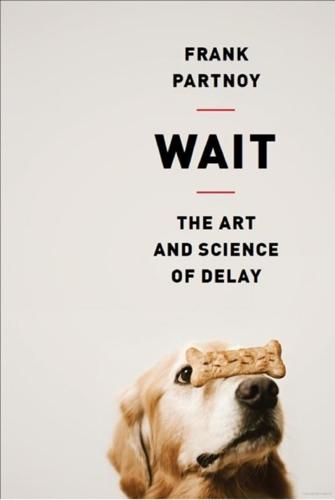
Wait: The Art and Science of Delay
by
Frank Partnoy
Published 15 Jan 2012
Like all of us, policymakers tend to have high discount rates, especially in the short term.5 Recall that a discount rate is the interest rate we use to compare future benefits and costs to current benefits and costs. The rate that governments use to assess future benefits and costs is sometimes called the “social discount rate.” It can dramatically affect whether government decisions look good or bad. If the social discount rate is high, it means the decision-maker values the future less. Given the influence of the media and election cycles, it shouldn’t be surprising that politicians value the short term a lot more than the long term. For two decades, the US Office of Management and Budget (OMB) has set a “base rate” of 7 percent for investments and regulatory programs designed for the general public.6 Meanwhile, other parts of the federal government, such as the General Accounting Office and Congressional Budget Office, use a discount rate closer to 1 percent.7 For many government decisions, the difference between 7 percent and 1 percent is night and day.
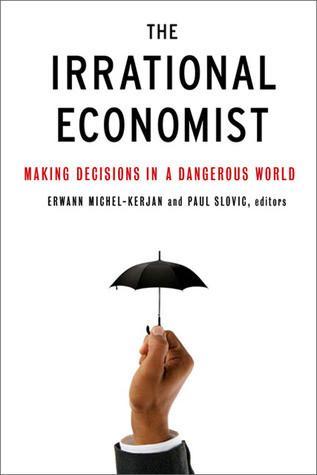
The Irrational Economist: Making Decisions in a Dangerous World
by
Erwann Michel-Kerjan
and
Paul Slovic
Published 5 Jan 2010
Indeed, people are generally willing to sacrifice current consumption when their future becomes uncertain. Macroeconomists who have been measuring the precautionary saving motive can tell us much about how cautiously people spend when their own future becomes uncertain. This well-documented observation justifies selecting a smaller social discount rate, implying more investments for the future. In The Economics of Risk and Time, which I wrote in 2002, I explain how the benefits of these investments should be targeted for the time horizons with the largest uncertainty, ceteris paribus. This provides an argument for implementing a decreasing term structure of the discount rate, if the precautionary effect dominates the wealth effect for longer time horizons.
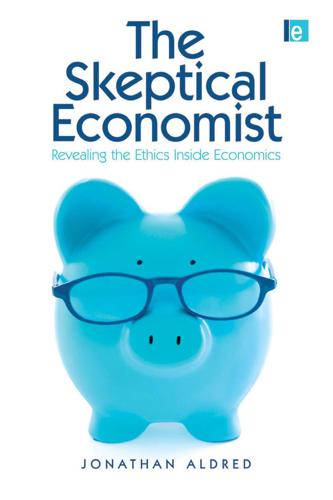
The Skeptical Economist: Revealing the Ethics Inside Economics
by
Jonathan Aldred
Published 1 Jan 2009
Journal of Economic Perspectives 19(4): 3-24 Conlisk, J. (1996) ‘Why bounded rationality?’ Journal of Economic Literature 34: 669-700 Costanza, R., R. D’Arge and 11 others (1997) ‘The value of the world’s ecosystem services and natural capital.’ Nature 387: 253-260 Coulter, A. (2002) The Autonomous Patient. London, Nuffield Trust Cowan, T. and D. Parfit (1992) ‘Against the social discount rate’ in Philsophy, Politics and Society: Future Generations. P. Laslett and J. Fishkin (eds) New Haven, Yale University Press Cox, R. (2006) The Servant Problem. London, I.B. Tauris Coyle, D. (2002) Sex, Drugs and Economics. New York, Texere Coyle, D. (2007) The Soulful Science. Princeton, Princeton University Press Crisp, R. (2007) ‘Hedonism reconsidered.’

The Measure of Progress: Counting What Really Matters
by
Diane Coyle
Published 15 Apr 2025
251 the stock of h uman capital—and this makes many expenditures on health and education a form of investment rather than consumption. On the consumption side, the comprehensive wealth framework has generally used the standard utility-maximisation approach, over an infinite horizon with a (much-debated) Ramsey social discount rate. However, it can also accommodate the capabilities perspective, with assets interpreted as a capabilities set. This does not lead to an immediate m easure of aggregate social welfare, which w ill depend on individual “conversion factors,” but it does provide an informationally rich environment for this evaluation.